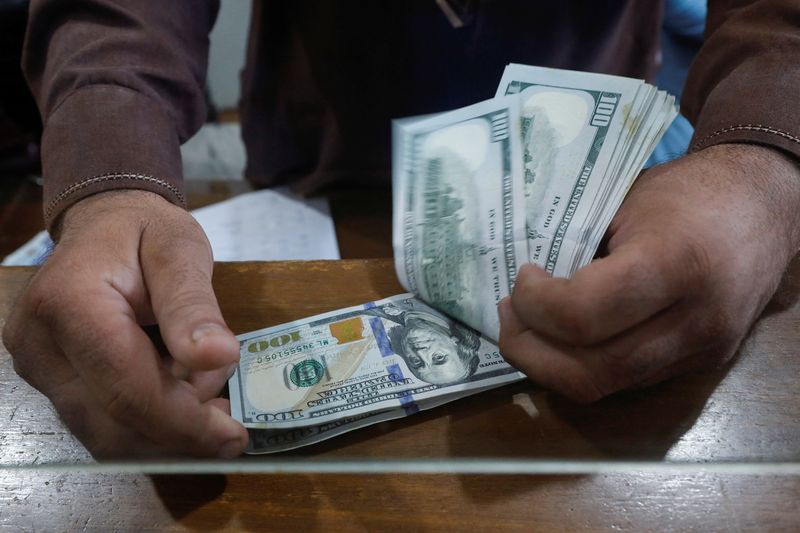Forex
Yen climbs while dollar stabilises after US inflation ebbs

By Harry Robertson and Tom Westbrook
LONDON/SINGAPORE (Reuters) – The Japanese yen rallied for a second day on Thursday after data on Wednesday showed a slowdown in U.S. inflation, while the dollar found a footing against other currencies following a sharp drop the previous day.
U.S. inflation slowed to 0.3% in April from a month earlier, down from 0.4% in March and below expectations for another 0.4% reading, Wednesday’s data showed.
Year-on-year core inflation – which strips out volatile food and energy prices – fell to its lowest in three years at 3.6%. Meanwhile, retail sales were flat, suggesting conditions for Federal Reserve interest rate cuts are falling into place.
The dollar dropped 1% against the yen on Wednesday after the data and was down a further 0.38% on Thursday at 154.32, having fallen as low as 153.6 before weak Japanese growth figures took some of the shine off the yen.
The Japanese currency has fallen around 9.5% this year as the Bank of Japan has kept monetary policy loose while higher Fed interest rates have drawn money towards U.S. bonds and the dollar. The yen has been particularly sensitive to any widening or closing of the interest rate differential.
The , which tracks the currency against six major peers, was last up 0.11% at 104.32 on Thursday after falling 0.75% on Wednesday as investors raise their bets on Fed rate cuts, now envisaging two reductions by the end of the year.
Some analysts said Fed officials will want to see proof of inflation’s downward path before countenancing cuts, a point made by Minneapolis Fed President Neel Kashkari on Wednesday.
remove ads
.
Francesco Pesole, FX strategist at ING, said: “In practice there isn’t all that much to be all that optimistic about. Inflation is moving in the right direction but still not at levels that would allow the Fed to cut rates.”
Pesole said investors were now waiting for U.S. personal consumption expenditures inflation data in late May. “My view at this stage is that we could just default to another couple of weeks of low volatility, lack of direction, and range-bound trading.”
The euro hit a two-month high at $1.0895 on Thursday before dipping to trade 0.1% lower at $1.0874. Britain’s pound reached a one-month top of $1.2675 before falling back slightly.
The Australian dollar, which surged 1% on Wednesday, hit a four-month high at $0.6714 but then paused after an unexpected rise in Australian unemployment.
It was last at $0.6684 as traders priced out any risk of a further rate hike in Australia.
touched a three-week high of $66,695 before dipping slightly.

 Forex3 years ago
Forex3 years agoForex Today: the dollar is gaining strength amid gloomy sentiment at the start of the Fed’s week

 Forex3 years ago
Forex3 years agoUnbiased review of Pocket Option broker

 Forex3 years ago
Forex3 years agoDollar to pound sterling exchange rate today: Pound plummeted to its lowest since 1985

 Forex3 years ago
Forex3 years agoHow is the Australian dollar doing today?

 Cryptocurrency3 years ago
Cryptocurrency3 years agoWhat happened in the crypto market – current events today

 World3 years ago
World3 years agoWhy are modern video games an art form?

 Commodities3 years ago
Commodities3 years agoCopper continues to fall in price on expectations of lower demand in China

 Economy3 years ago
Economy3 years agoCrude oil tankers double in price due to EU anti-Russian sanctions


























